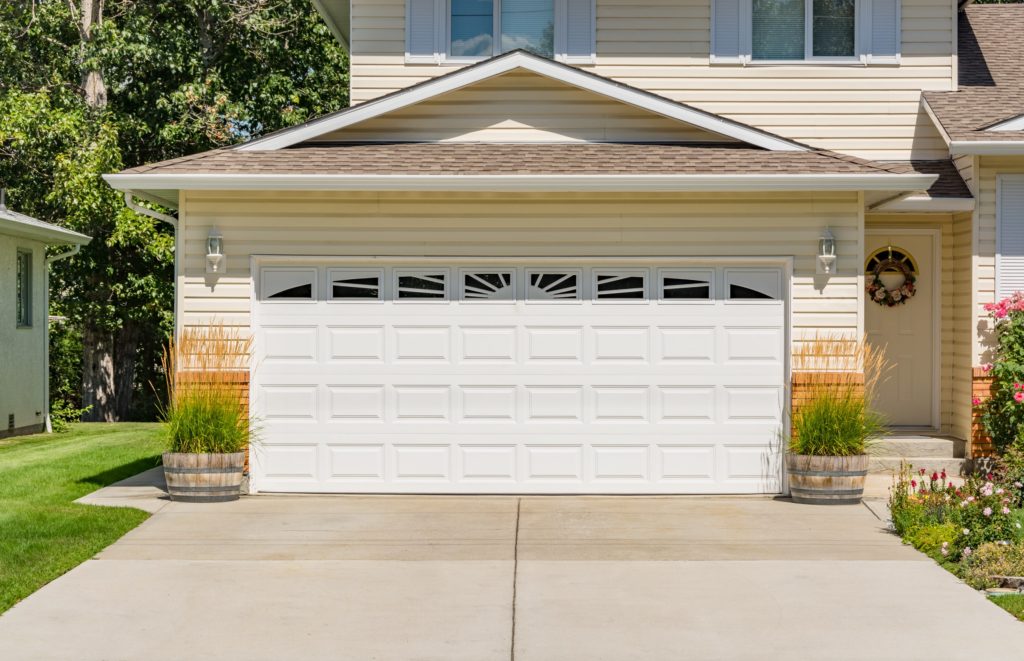Sustainability in the Roofers Companies: Trends and Innovations
The roofing industry has undergone significant transformations in recent years, particularly when it comes to sustainability. As more and more consumers are becoming environmentally conscious, the demand for sustainable roofing options has risen. This shift towards sustainability is also fueled by the growing awareness of climate change and its impact on our planet. As a result, innovative technologies and materials have emerged in the roofing companies, offering not only eco-friendly solutions but also cost-effective and durable ones. In this blog post, we will take a deep dive into the current trends and innovations in sustainable roofing and how they can benefit both homeowners and businesses. Whether you’re looking to replace your roof or seeking new opportunities as a roofer, understanding these advancements will provide valuable insights into the direction of the industry as well as potential considerations for your next project.
The concept of sustainability in the roofing industry.
As we look towards a greener and more sustainable future, it is becoming increasingly important for businesses to adopt sustainable practices in their operations. The roofing industry is no exception. Adopting sustainable practices not only helps in environmental conservation but also brings long-term viability to businesses within the industry.
One key aspect of sustainability in the roofing industry is the use of eco-friendly materials. This includes materials that are renewable, recyclable, and non-toxic. For instance, metal roofing is an excellent option as it is recyclable, has a long lifespan, and reflects sunlight- reducing energy needs. Similarly, clay and concrete tiles are also eco-friendly options made with natural materials that have a long lifespan, low maintenance, and are fire-resistant. By utilizing such materials in their operations, roofing companies can enhance their sustainability footprint.

Roofers Companies
Another important aspect of sustainability in the roofing industry is proper waste management. The industry generates a significant amount of waste, from old roofing materials to construction debris. Through proper waste management strategies like recycling and reusing, companies can significantly minimize their environmental impact. Not only does this reduce waste and make the process more eco-friendly, but it also saves costs- making it a win-win situation for both businesses and the environment.
Additionally, sustainable roofing practices can help businesses reduce their carbon footprints. For instance, using solar panels in roofing systems can help reduce energy consumption and dependence on non-renewable sources of energy. Similarly, green roofs- which are covered with vegetation- can absorb CO2, minimize the urban heat island effect, and filter air pollution.
The roofing industry faces unique challenges in promoting sustainability. However, by implementing sustainable practices like the use of eco-friendly materials, proper waste management, and reducing carbon footprints, businesses in the industry can lead the way in environmental conservation. Not only will such practices make for a safer and more eco-friendly environment, but they will also create more long-term viability and profitability for businesses.
Green Roofing: A Growing Trend
As concerns about climate change intensify, more people are turning to eco-friendly roofing solutions that provide numerous environmental benefits. One such solution is green roofing, which involves the installation of vegetation on top of a building’s roof.
One of the primary benefits of green roofs is improved energy efficiency. The vegetation and soil on top of the roof act as insulation, reducing the amount of heat that enters the building during the summer months, thereby reducing cooling costs. During the winter months, the soil and vegetation act as a barrier to heat loss, thus reducing heating costs. Additionally, green roofs also reduce the urban heat island effect, where cities can be significantly warmer than surrounding rural areas due to the abundance of hard, heat-absorbing surfaces such as concrete and asphalt.
Another significant benefit of green roofs is stormwater management. These roofs absorb rainwater and release it slowly into the environment, reducing the strain on sewer systems. This helps prevent flooding and the contamination of waterways with harmful substances, as well as providing a local water source for the plants on the roof. Additionally, green roofs can also filter pollutants out of the air, improving air quality.
Green roofs also promote biodiversity, providing a habitat for insects, birds, and other wildlife. This is especially beneficial in urban areas where green spaces are limited. A green roof can be a refuge for biodiversity, increasing the variety of species in the area and boosting the ecosystem’s overall health.
Successful green roof projects have been implemented around the world, with several making significant positive impacts on the environment. In Chicago, the roof of the City Hall was transformed into a green roof in 2000. Since then, it has provided numerous benefits, including energy savings of up to 10%, a reduction in stormwater runoff by 80%, and a home for approximately 25 species of birds. Another successful green roof project is the Vancouver Convention Centre’s green roof, which covers roughly six acres and contains over 400,000 indigenous plants. This has reduced the building’s energy consumption by 50% and contributed to the local biodiversity, attracting many species of birds and insects.
Energy-Efficient Roofing Materials
The pursuit of a more energy-efficient future has inspired several groundbreaking innovations in roofing materials. With global efforts to reduce greenhouse gas emissions and increase sustainability, cool roofs, and PV solar panels are at the forefront of this pursuit. Let’s take a closer look at these advancements.
Cool roofs are roofing systems that are designed to reflect more sunlight and absorb less heat. This helps to reduce the amount of heat that is absorbed by the building, which ultimately lowers the amount of energy required to cool it. Cool roofs have proven to reduce energy consumption by up to 15%, making them an attractive option for homeowners and businesses alike. In addition to reducing energy consumption and greenhouse gas emissions, cool roofs also have a positive impact on the environment by mitigating the urban heat island effect.
Another significant advancement in energy-efficient roofing is the integration of photovoltaic solar panels. These panels convert sunlight into electricity, which can be used to power the building and reduce energy bills. PV solar panels are becoming increasingly popular, not only because of their environmental benefits but also because they contribute to significant cost savings. A typical installation of PV solar panels can generate energy savings of up to $100,000 over 25 years.
The benefits of cool roofs and PV solar panels are not limited to reducing energy bills and greenhouse gas emissions. There are also several financial incentives and tax credits available for installing energy-efficient roofing systems. For example, the Federal Investment Tax Credit (ITC) allows homeowners and businesses to claim a credit equal to 26% of the cost of their PV solar panel systems. Additionally, some states and municipalities offer rebates and incentives to homeowners and businesses that install energy-efficient roofing systems.
The development of energy-efficient roofing materials such as cool roofs and PV solar panels is a step in the right direction towards a more sustainable future. The benefits of these advancements are numerous, ranging from reducing energy consumption and greenhouse gas emissions to cost savings and financial incentives. As we continue to prioritize sustainability, we can expect even more breakthroughs in energy-efficient roofing materials, helping us move closer to a greener future.

Roofers Companies
Sustainable Roofing Practices
Sustainable roofing practices are becoming increasingly popular due to their many benefits to the environment and the homeowner’s wallet. These practices include proper insulation, ventilation, and rainwater harvesting.
Proper insulation is a crucial component of sustainable roofing practices. It helps to reduce energy consumption by preventing heat loss during cold weather and heat gain during hot weather. Insulation also helps to regulate the temperature inside the house, making it more comfortable for the occupants. This, in turn, reduces the amount of energy needed for heating and cooling, resulting in lower energy bills and reduced environmental impact.
Ventilation is also a critical aspect of sustainable roofing practices. Proper ventilation allows fresh air to circulate inside the house, reducing the need for air conditioning. This reduces energy costs and also improves air quality, contributing to a healthier living environment. Additionally, proper ventilation can help prevent the growth of mold and mildew, which can damage the roof and compromise its integrity.
Rainwater harvesting is another practice that can be implemented to make roofing more sustainable. This involves collecting and storing rainwater from the roof, which can then be utilized for various household purposes, such as watering plants, flushing toilets, and washing clothes. Rainwater harvesting reduces the need for treated water, reducing water bills and conserving water resources. This practice also reduces the amount of stormwater runoff, which can cause erosion, flooding, and water pollution.
Implementing sustainable roofing practices in both residential and commercial settings is relatively straightforward. For instance, proper insulation can be achieved by installing insulation materials between the rafters or over the existing roof. Adding a ridge vent or a gable vent will improve ventilation. Rainwater harvesting can be done by installing gutters and downspouts that channel rainwater into a storage tank.
Recycling and Waste Management
In recent years, the importance of recycling and responsible waste management has become increasingly apparent in the construction industry. This includes the roofing sector, which plays a vital role in promoting sustainable building practices. Recycling not only helps reduce landfill waste but also promotes a circular economy, which is crucial for conserving our natural resources and mitigating the impact of climate change.
One way the roofing industry is contributing to sustainable construction practices is by recycling roofing materials. Asphalt shingles, for example, can be broken down and processed to create new roofing materials, which reduces the need for new raw materials. Not only does this help conserve natural resources, but it also reduces the environmental impact of producing new shingles.
In addition to asphalt shingles, metal roofing materials can also be recycled and repurposed to create new products. Metal roofs are being increasingly used in construction due to their durability and longevity. Once the roof has reached the end of its life, the metal can be melted down and used to create new products, reducing the amount of waste that ends up in landfill sites.
Innovative recycling programs and initiatives are being implemented in the roofing industry to encourage responsible waste management practices. For example, some companies are offering recycling services to collect discarded roofing materials from job sites and process them for reuse. Other programs provide incentives for contractors and building owners who prioritize sustainable materials and practices in their construction projects.
The circular economy model is gaining traction in the roofing industry, where waste is not seen as a problem but as an opportunity to create new products. Through recycling and responsible waste management practices, the roofing industry is taking steps towards a more sustainable future. It’s essential to continue promoting sustainable building practices, like those being implemented in the roofing industry, to ensure a healthier planet for generations to come.
Technology and Innovation in Sustainable Roofing
The roofing industry is transforming with cutting-edge technologies and innovations. With the increasing focus on sustainable building practices, the roofing industry is adopting new technologies to increase energy efficiency and reduce environmental impact. These technologies are transforming the way roofs are designed, installed, and maintained.
One of the most significant advancements in the roofing industry is the introduction of green building certifications. These certifications have become increasingly important in ensuring that building projects meet stringent environmental standards. The most common green building certifications include Leadership in Energy and Environmental Design (LEED), Green Globes, and Living Building Challenge. These certifications assess a building’s environmental performance based on factors such as energy efficiency, water conservation, and use of sustainable materials.
Digital tools for energy analysis are also transforming the roofing industry. These tools help contractors determine a building’s energy efficiency and identify areas where improvements can be made. The use of energy analysis tools can lead to significant cost savings by identifying areas where energy is being wasted and allowing for more efficient use of resources.
Another innovative technology that is revolutionizing the roofing industry is drone inspections. With the help of drones, contractors can quickly inspect roofs, identify damage or maintenance needs, and plan repairs. This technology is not only efficient and accurate, but it also reduces the risk of injury for workers who would otherwise need to climb onto roofs for inspections.
In addition to these technologies, new roofing materials are also being developed that enhance sustainability. These materials include green roofs, solar panels, and cool roofs. Green roofs provide a layer of vegetation that helps to insulate buildings, reduce heat absorption, and provide a habitat for birds and insects. Solar panels can generate electricity from the sun’s rays, powering the building and reducing reliance on fossil fuels. Cool roofs are designed to reflect sunlight and reduce heat absorption, which can help to reduce energy consumption and prolong the life of the roof.
With the help of green building certifications, digital tools for energy analysis, drone inspections, and new roofing materials, the industry is transforming the way buildings are designed, built, and maintained. These innovations are not only environmentally friendly, but they are also cost-effective and benefit contractors, building owners, and the wider community.

Roofers Companies
Collaborative Efforts and Industry Partnerships
Collaboration and partnerships have proven to be vital in promoting sustainable practices in the roofing industry. Manufacturers, government agencies, non-profit organizations, and roofing companies must work together to drive positive changes toward sustainability.
Roofing companies, for instance, have a role to play in educating consumers about sustainable roofing practices. They can encourage homeowners to invest in roofing materials that are environmentally friendly, energy-efficient, and offer better insulation. With their experience and expertise, roofing companies can also advise consumers on the best roofing materials to use based on the local climate and weather patterns.
On the other hand, manufacturers can contribute to promoting sustainability by producing eco-friendly materials that are safe for both consumers and the environment. They can also research sustainable roofing materials and work with roofing companies to develop and popularize them.
Government agencies also play a crucial role in promoting sustainable practices in the roofing industry. Through legislation and policies, they can incentivize companies to adopt sustainable practices, such as recycling materials or reducing energy consumption.
Non-profit organizations can also work collaboratively with stakeholders in the roofing industry to promote sustainable practices. They can provide funding and resources to research and develop innovative roofing technologies, as well as educate consumers and policymakers on the importance of sustainability in the roofing industry.
In conclusion, the roofing industry is making significant strides toward sustainability through technological advancements, collaborative efforts, and industry partnerships. With a focus on green building certifications, digital tools for energy analysis, new roofing materials, and collaborations between manufacturers, government agencies, non-profit organizations, and roofing companies – the industry is moving towards a more sustainable future. It’s crucial to continue promoting and investing in sustainable roofing practices to ensure a healthier planet for generations to come. So, it is evident that the journey towards a sustainable future requires not only innovation and technology but also collective efforts and partnerships across different sectors. Only by working together can we achieve a truly sustainable future for all. Let us continue to push boundaries, challenge old practices, and embrace new technologies to pave the way for a greener and more sustainable roofing industry.
https://www.google.com/maps?cid=465871782046421571




